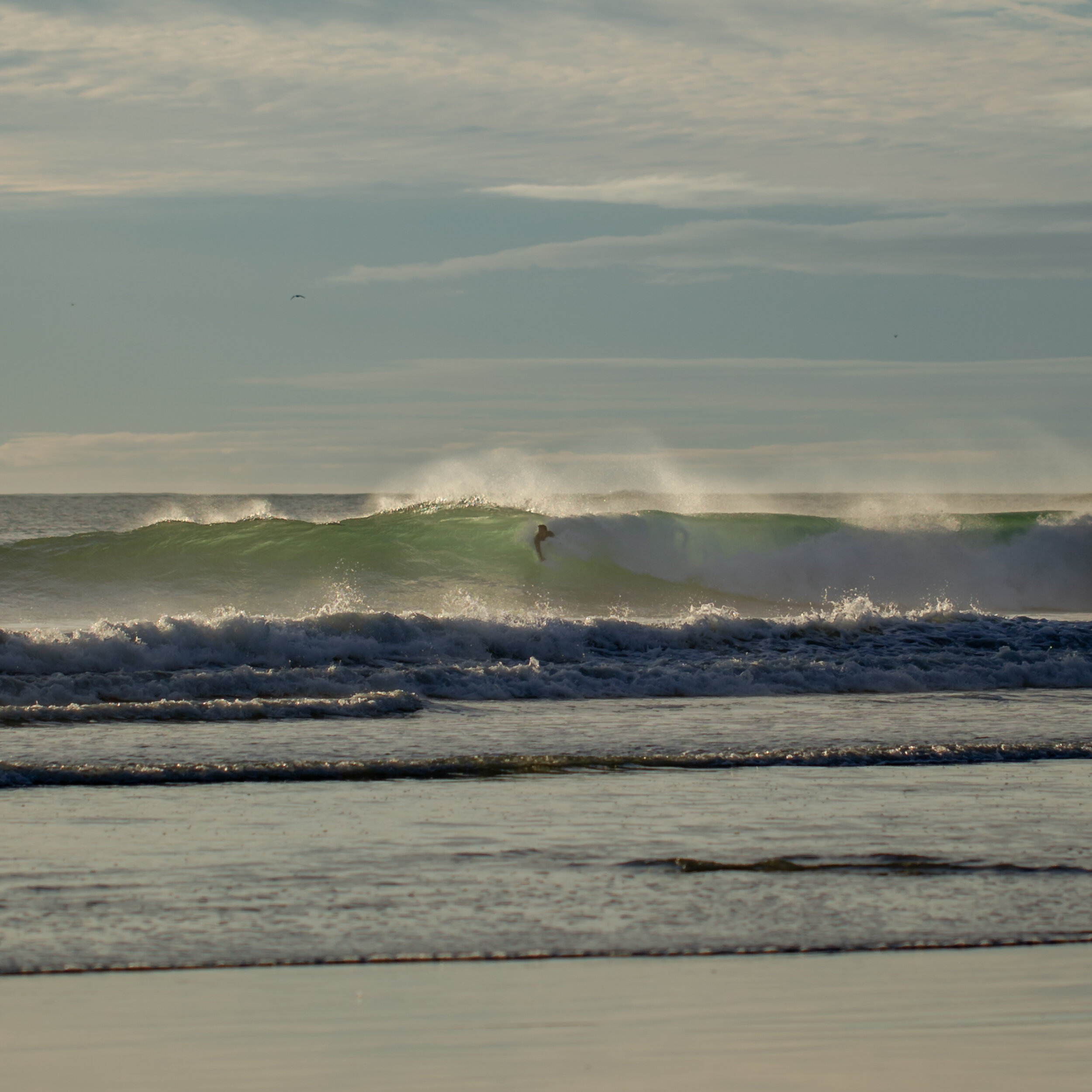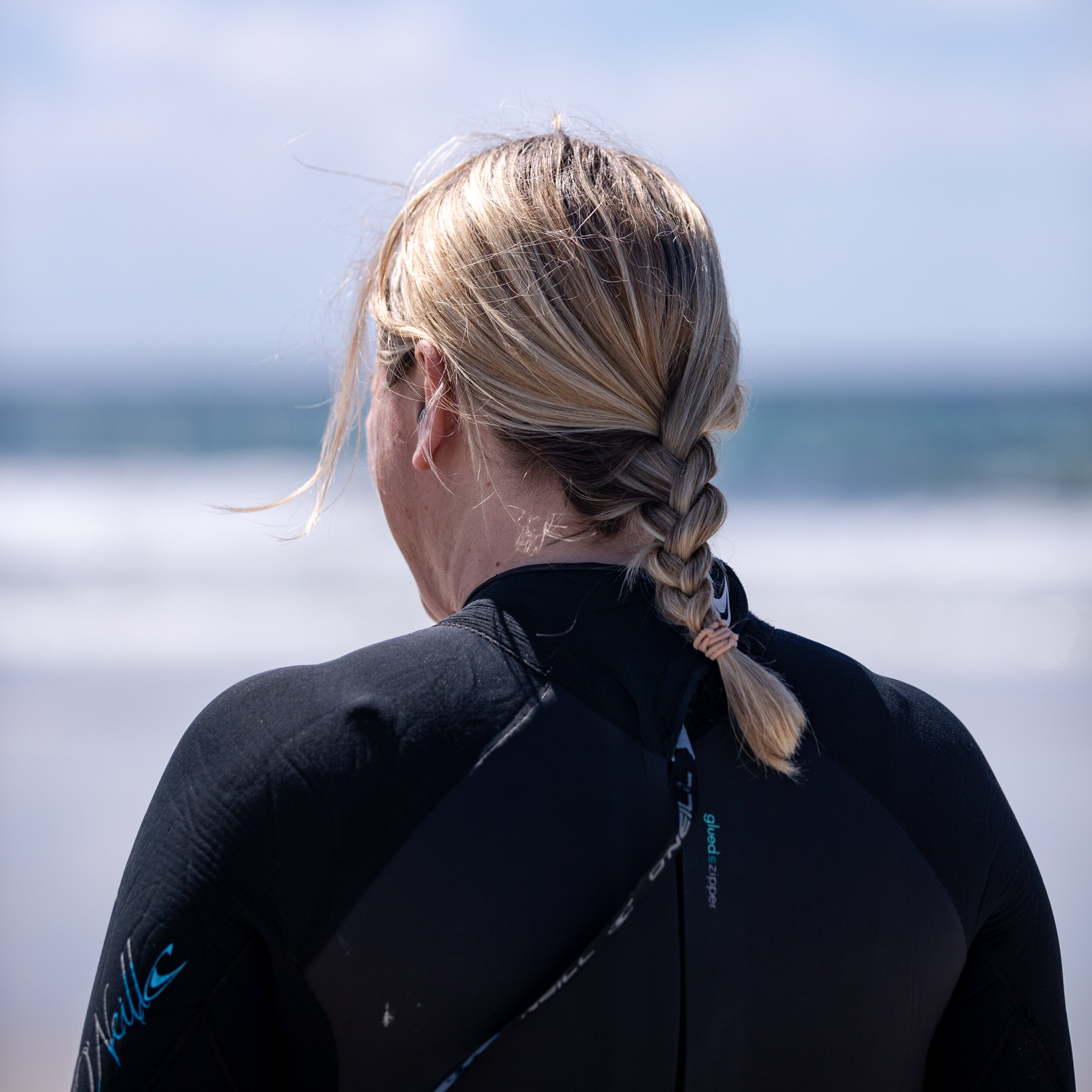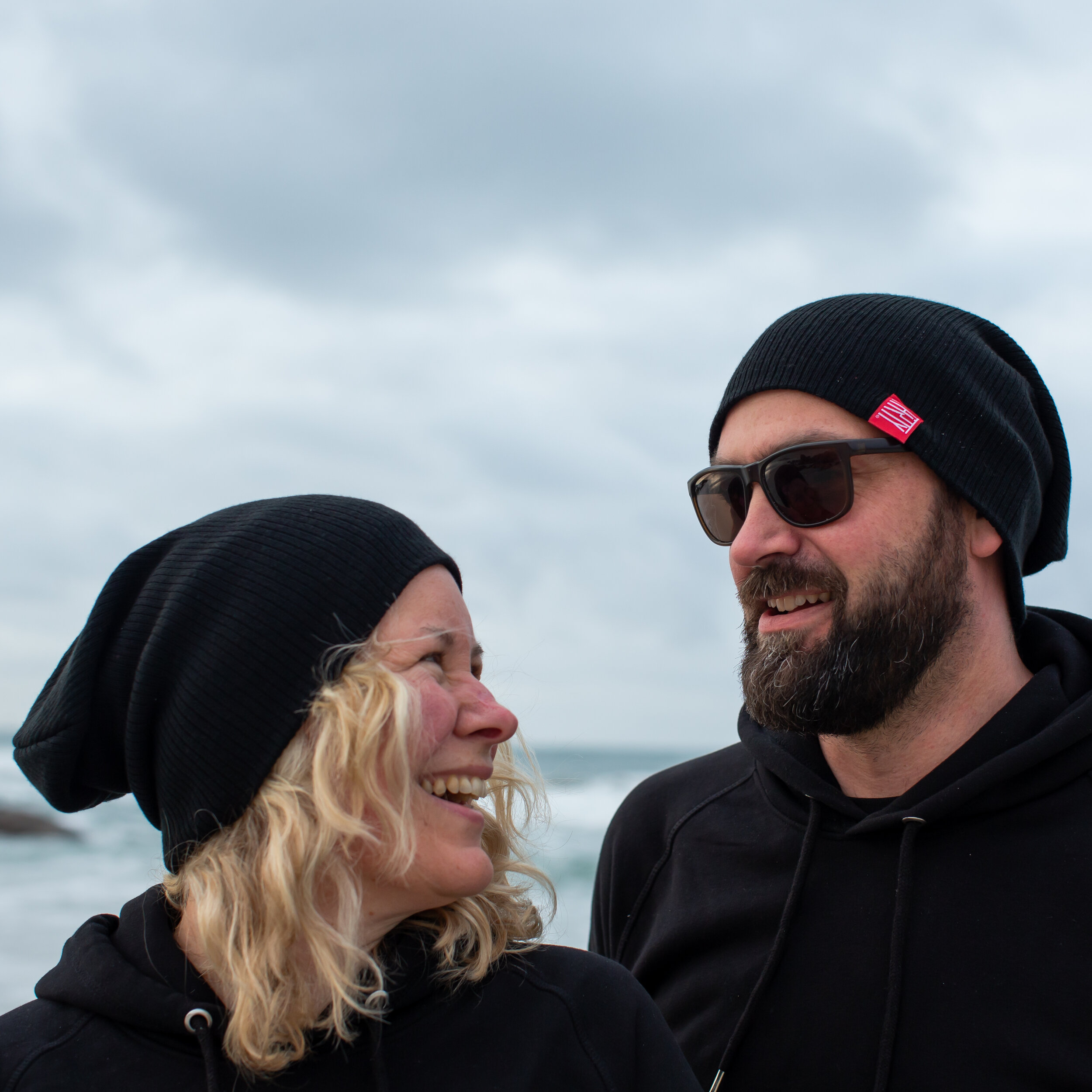5 Ways To keep Warm Bodysurfing in Winter That Really Work.
When it comes to keeping warm when you are cold water bodysurfing we thought 5 was a good starting point. So, here are 5 ways to keep warm bodysurfing in winter that really work. Suit up get a great wetsuit, prepare make a little list of stuff not to forget, warmup before you take the surf, warm up real slow there’s no rush and keep moving when you’re in the water.
Swimming or surfing in cold water has become quite the media talking piece in the last few years, so much so that it begins to take on some kind of mythical energy, best left to the real surf pros or super tough Northerners. I would like to happily debunk that feeling that you have to have studied up on every aspect of how to survive the cold water. A lot of it is common sense, but I can share some tips that I (by no means a hardened professional) have learned through trial and error, the experience of fellow surfers and a bit of science around how a wetsuit acts as an insulator and understanding the “afterdrop”. As the anticipation of that first cold blast of water began to creep in once more, it led me to refine my methods of the 5 ways to keep warm bodysurfing in winter that really work.
It’s a gorgeous sunny day in March on the Isle of Tiree and the surf forecast gets 4 stars, so it’s time to down tools and hit The Maze for a bodysurf. It may be officially heading towards Summer, but the water temperature is still only 8 °C this time of year, and despite the glorious sunshine I need to figure out how best to stay warm.
Having lived in New Zealand for ten years and a with a love affair of being in the sea that far precedes that, it was only when I moved to the Isle of Tiree and swapped the Pacific Ocean for the chilly Atlantic waves that I really began to research how I could keep warm during winter, especially having discovered the thrill of body surfing. The good news is that thanks to the island being located in the Gulf Stream the temperature always stays a good few degrees above freezing. Still, heading into 8 °C waters requires a serious solution to keep warm.
5 ways to keep warm bodysurfing in winter that really work
1. Suit up
2. Jump like an army recruit
3. Prepare, prepare, prepare
4. Keep moving
5. Warm up real slow
1. Suit up
There is no getting away from it. If we are going into the sea in winter, we need to embrace all things neoprene starting with the thickest suit that we can find. The rule of thumb is, the thicker the neoprene the warmer the suit. Yes there are some hardy souls who embrace cold water swimming and build up enough tolerance to do away with a wetsuit, but if you want to spend a decent amount of time in the surf, find yourself a 5mm suit and at least a pair of neoprene boots too - if you really feel the cold a pair of gloves and hat wouldn't be a crazy plan either – brain freeze hurts!.
Some people handle the cold better than others, but it's always better to have to take something off, than miss it when you are out in the water. Personally, I need the boots. The sea equivalent of my much loved Ugg slippers. If my feet are warm, I am warm.
There is a common misconception that wearing a wetsuit protects you from cold water, by doing its best to keep the water out. What your suit actually does is to act as an insulator by trapping water between your skin and suit allowing your body to warm that water to an acceptable temperature and keep it there.
Treat your suit with care and when it starts to sprout holes, either replace it, or get yourself a wetsuit repair kit and patch it up. Holes mean a loss of insulation, so it's worth fixing.
2. Jump like an army recruit
The best piece of advice I found was the one that went against my gut and also caused the most amusement to any casual beach walkers. Warm up before you get in the water. In my head I thought going into cold water with a warm body would make the cold water more of a shock - in the same way that it does when you sunbathe and then dive into a cool pool.
Not so. The key here is to get our internal temperature up with some light jogging, or some star jumps on the spot and in addition to amusing any passing walker, it worked. That warmth that we get from a little light exercise carried with me as I felt that first rush of cold water into my wetsuit.
The other suggestion is to pour warm water into your wetsuit before you get into the cold. I haven't tried this one yet, but it makes perfect sense. When that cold water rushes into your wetsuit your body is working super hard to warm it to an acceptable body temperature. If you flush the warm water in first, it means your body isn't having to work as hard as soon as you enter the water.
“there are two kinds of surfers, surfers that pee in their wetsuits and surfers that don’t tell the truth”
Of course, if you forget the warm water there is the dirty trick which has spawned many a humorous quote, my favourite being “there are two kinds of divers, divers that pee in their wetsuits and divers that don’t tell the truth”. Ultimately, the choice is yours, just make sure you wash that suit out really well after every use!
3. Preparation is key
I’ll be honest, on our wee island we are lucky enough to be within 5-10 mins of several great surfing beaches, so I often get out of the water, throw myself into the van and head home asap - the idea of trying to get out of my wetsuit and into warm dry clothes does sound appealing, but doing that in gusting winds of at least 30+mph isn't remotely tempting.
Preparation is key though and there are a few things that I do prepare in advance:-
Ear plugs - I have always hated lots of water streaming into my ears (the perks of a childhood of ear infections), so have been wearing plugs for years and having spoken to some of the local surfers it may have saved me from lots of ear pain, otherwise known as ‘surfers ear’.
A warm vehicle to return to - on your way to the beach crank up the heating, so that it is nice and cozy on your way home.
Dry seats - there's nothing worse than heading out to the shop after a surf and sitting yourself down on a waterlogged seat. If you can spring for waterproof seat covers, it will make your journey much more comfortable. If you can't, or maybe your bored puppy scratched up your new covers (!) grab some bin bags or something similar and they will do the job.
A Dry robe - even if you can't face getting changed at the beach, taking your wetsuit half or fully off and driving back in a robe seems to keep the chills at bay.
A warm woolly hat - cold wet hair is the fastest way to get a chill, so keep your head cosy too.
Warm drink and chocolate - if you are feeling really organised grab a flask or insulated cup of your favourite warm beverage and a snack. The warm drink will gradually warm up your body - without rushing the process. Sugar also helps raise the body temperature and after throwing yourself into the cold sea, don't you deserve a treat?
4. Just keep moving
It sounds obvious but I know from experience it’s important to keep moving while you’re in the water. It's easy to get distracted waiting for the perfect wave and just bob about in the water getting stiff and cold.
The more you keep moving around, the more your body will pump warm blood into your feet and hands. The water can get quite shallow on some of our beaches, so I also throw in the odd bouncy jog back into the water, just to keep moving.
Another tip I learned is to shrug my shoulders up and down, which forces more warm blood into my hands. Basically, in between waves, if you’re busting shapes like a 90’s disco raver, chances are you’re keeping warm.
A great motivation for me to keep moving in Winter (aside from the need to keep warm), is that it is great training for summer surf. You have to work harder in cold water and that is a great training ground for a warmer climate - imagine going from a full wetsuit, hat, gloves, boots to a costume and at most a rash vest? It's the watersports equivalent of those top athletes that train at high altitudes and extreme temperatures. Plus, there is the bragging rights that you will have for having got out there in winter!
5. Warm up slow
The temptation when you get home from a winter bodysurf is to head straight for a hot shower, or a huge warm bath, but that would be the worst idea. There is a term for what happens to your body after being in cold water “Afterdrop” and the Outdoor Swimming Society offer a brilliant explanation of what that is:
Afterdrop happens because when you swim, your body shuts down circulation to your skin, pooling warm blood in your core. This process helps you stay in the water longer: with reduced circulation to your peripheries skin and sub-cutaneous fat is turned into a thermal layer, similar to a natural wetsuit – hence the wild swimmers’ term bioprene for fat.
But as you start to warm up, this process reverses: blood starts to recirculate in your extremities and peripheral blood vessels, cooling as it travels. You can lose up to 4.5°C from your core temperature (according to Golden and Tipton, Essentials of Sea Survival), bringing on shivering, hypothermia, or feeling faint and unwell.
The key to warming up and staying well is to warm up slowly and gradually. If you attempt to rush it by, for example, having a warm shower or bath, you will draw the warm blood that has pooled in your core to the skin at speed, leading to rapid cooling. You will quite likely faint as your temperature plummets along with your blood pressure.
All that sounds quite daunting, but it's just a reminder that there is something quite zen about this whole cold water endeavour. It can’t and shouldn’t be rushed. Just as you prepare yourself for getting into the water, you should take care to warm up slowly.
It is worth noting that once you get out of the water, your body doesn't automatically start to warm up. In fact, your core temperature continues to cool down for the first 20-30 minutes, which is why it’s important to start the warm up process early on and think of your warm up as a step by step process. I warm up in stages, starting with drying off, sipping a warm drink, putting on some warm clothes and sipping more warm drinks.
My final bit of advice doesn’t come from research, but from experience...you never regret a bodysurf.
You watch the online weather forecast in anticipation, decide that tomorrow is the day, ignore your friends' comments of “are you mad”?, psych yourself up, suit up, jump around on the sand like a loon, maybe flush some warm water down your suit, before walking out into the waves, board in hand, with a big grin on your face as you catch that first wave. And you remember there is nothing like that feeling as you press your board into that wave and ride it as far as possible.
If you’re lucky (and in Scotland) you may even have some seal buddies join you for a few waves, probably mistaking you for a strange and clumsy seal hybrid, but happy to watch you play in the waves all the same.
I’m not giving you a guarantee here, I can just tell you with absolute confidence that for every feeling of dread I have felt about plunging into the cold water, the awesome feeling that you get from bodysurfing in winter wipes that from your mind. Whether it's the rush of endorphins, the thrill of catching a wave just right, or the heady abandon of doing something a little bit mad, it's the reason that I find myself once again squeezing into an unforgiving wetsuit and star jumping for all I’m worth on the side of the water...because really, don’t we all want to do more things that are just a little bit mad? And when you do, just remember these 5 ways to keep warm bodysurfing in winter that really work!



